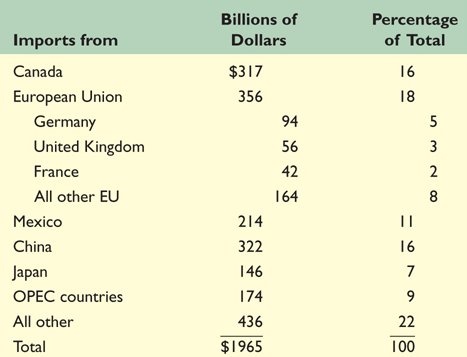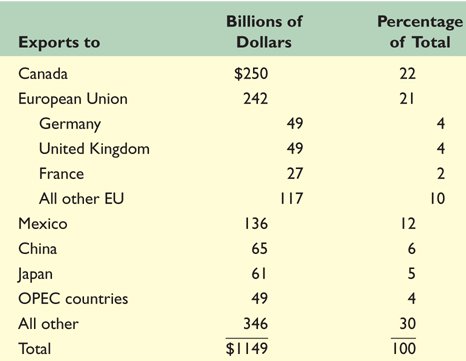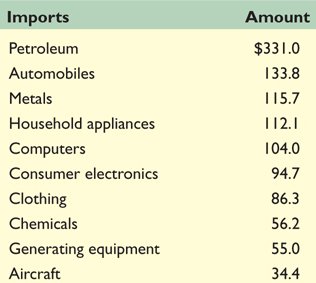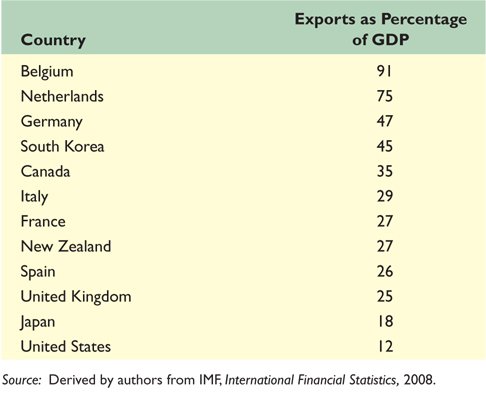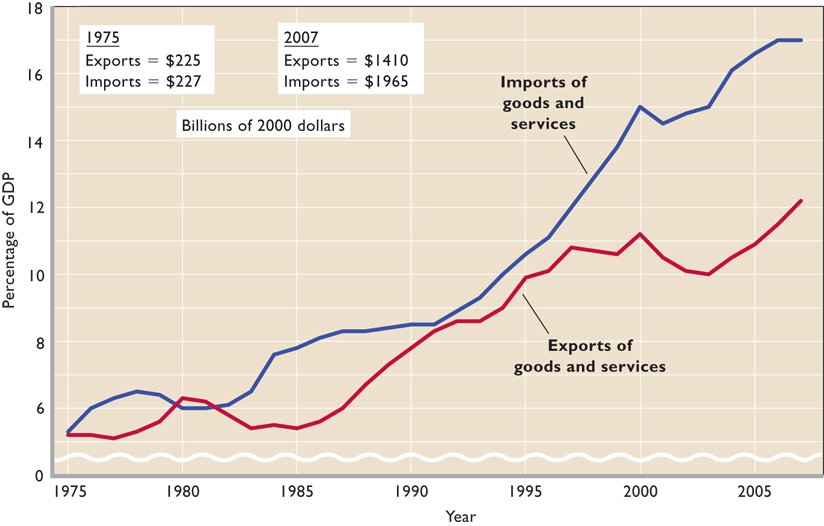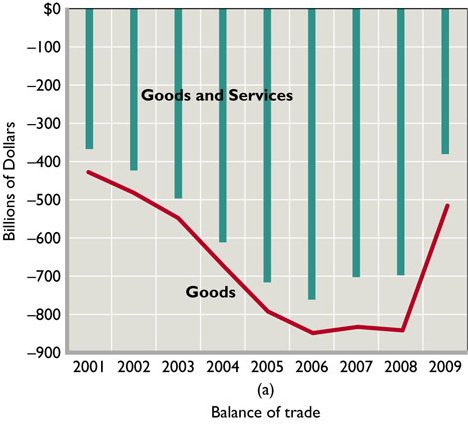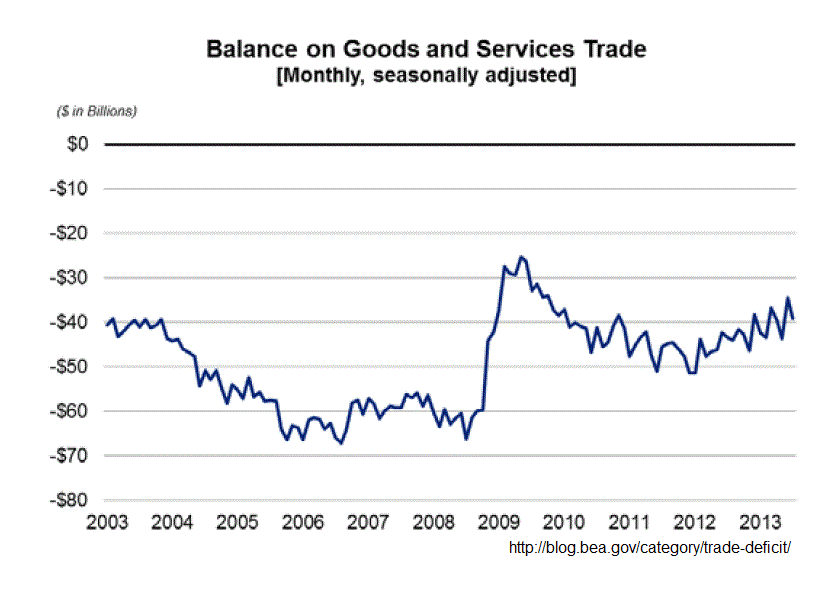1. mobility differences
2. currency differences
3. politics
B. The Key Facts of International Trade
2013: https://www.census.gov/foreign-trade/statistics/highlights/top/top1312yr.html
2014: http://trade.gov/mas/ian/build/groups/public/@tg_ian/documents/webcontent/tg_ian_003364.pdf
2017: https://www.census.gov/foreign-trade/statistics/highlights/top/top1712yr.html
1. US Trading PartnersFrom whom do we buy the most ?
2017 Imports
https://www.census.gov/foreign-trade/statistics/highlights/top/top1712yr.html#imports
2007
To whom do we sell the most ?
2017 Exports
https://www.census.gov/foreign-trade/statistics/highlights/top/top1712yr.html#exports
2007
2017 Total Trade
https://www.census.gov/foreign-trade/statistics/highlights/top/top1712yr.html
2. What do we trade?
What are the principal US exports?
Principal US Exports of Goods
2017: http://www.worldstopexports.com/united-states-top-10-exports/
- Machinery including computers: US$201.7 billion (13% of total exports)
- Electrical machinery, equipment: $174.2 billion (11.3%)
- Mineral fuels including oil: $138 billion (8.9%)
- Aircraft, spacecraft: $131.2 billion (8.5%)
- Vehicles: $130.1 billion (8.4%)
- Optical, technical, medical apparatus: $83.6 billion (5.4%)
- Plastics, plastic articles: $61.5 billion (4%)
- Gems, precious metals: $60.4 billion (3.9%)
- Pharmaceuticals: $45.1 billion (2.9%)
- Organic chemicals: $36.2 billion (2.3%)
2007: (in Billions of Dollars)
What are the principal US Imports?
Principal US Imports of Goods (2007, in Billions of Dollars)
2017: http://www.worldstopexports.com/united-states-top-10-imports/
- Electrical machinery, equipment: US$356.8 billion (14.8% of total imports)
- Machinery including computers: $349.1 billion (14.5%)
- Vehicles : $294.6 billion (12.2%)
- Mineral fuels including oil: $204.2 billion (8.5%)
- Pharmaceuticals: $96.4 billion (4%)
- Optical, technical, medical apparatus: $86.2 billion (3.6%)
- Furniture, bedding, lighting, signs, prefab buildings: $67.2 billion (2.8%)
- Gems, precious metals: $60 billion (2.5%)
- Plastics, plastic articles: $54.9 billion (2.3%)
- Organic chemicals: $46.1 billion (1.9%)
2007:
3. International Comparisons
Which countries export the most?
Total Exports: % of World
2009
2006
2011
- China 10.2%
- US 8%
- Germany 8%
- Japan 4.5%
- Netherlands 3.5%
- France 3.2%
- South Korea 2.5%
- Italy 2.4%
2016: https://www.worldatlas.com/articles/exports-by-country-20-largest-exporting-countries.html
2017: https://www.statista.com/statistics/264623/leading-export-countries-worldwide/
Exports as a Percentage of GDP
2008
2011
- Belgium 82%
- Netherlands 81%
- Germany 50%
- United Kingdom 32%
- Canada 31%
- Spain 30%
- New Zealand 30%
- Itasly 29%
- France 28%
- Japan 18%
- US 14%
2016: https://www.theglobaleconomy.com/rankings/Exports/
How can exports be more than 100% of its GDP?
The US leads the world in the combined volume of exports AND imports.
Summary:
Major Exporters:
- US
- Western Europe
- Japan
- China
New Participants in International Trade
- China and Hong Kong
- Singapore, South Korea, Taiwan
(combined export more than France, Britain, or Italy)- also Malaysia and Indonesia
- Eastern Europe (Poland, Hungary, Czech republic)
- maybe Russia
4. Growth of Trade
a. US trade as a percentage of GDP
(note the trade deficit)
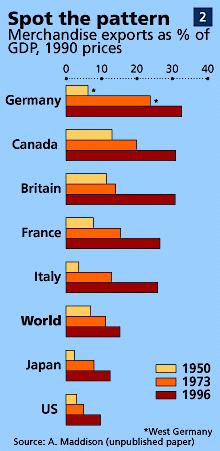
b. Why has trade increased?
(1) Improvments in transportation technology (Costs)
(2) Improved Communications Technolgy (internet)
(3) General Decline in Tariffs (Structural Adjustment)
